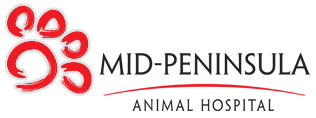We're not flexing our Medical Geek cred, but really, what's passes as a first aid kit for sale in the local store is quite silly in a major earthquake scenario. Different sized Band-aids, are you kidding me?
Don't get us wrong, we would never discourage having one. They're great for little kitchen mishaps, and the labeling does make them easier to find. But for a real First Aid kit, good for a real earthquake, it's super easy to pull a few things together and be ready for real. BTW, if there's a teenager in the house, maybe show them this post. Then, let them show you how it's done.
First you need a container: for a regular household kit, a tackle box comes with nifty little compartments plus a really helpful handle; but for a simple earthquake kit a gallon-sized zip lock will work. Or keep it in a knapsack in a handy location, with the rest of your earthquake supplies.
Second, you need the first aid items themselves. The main principle is to have items that are designed to work for different things and different scenarios. For example, disinfectant pads are good, but disinfecting liquid can cover the same smaller scenario, or larger wounds. Gauze and tape can become a bandage for larger injuries, or small. A cohesive bandage can wrap a wrist, or couple with gauze and tape to add pressure to a bigger situation. Tongue depressors can double as little splints. Eye irrigating solution can flush an eye, or flush out a wound before you apply disinfectant. You get the picture.
So we have a quick list of 15 items for a Real First Aid kit:
- surgical gloves
- an assortment of band-aids
- gauze and cotton squares, and rolls
- cloth bandage tape
- antibiotic ointment (avoid "triple")
- tongue depressors (6 or so)
- burn/wound dressing
- straight mosquito forceps (5")
- bandage scissors (4.5")
- hand sanitizing lotion (4oz)
- eye irrigating solution (4oz)
- Povidone-iodine, or chlorhexidine gluconate first aid antiseptic solution (3oz)
- digital thermometer, with batteries
- lubricant and covers to go with the digital thermometer
- flexible cohesive bandage (that sticks to itself, 3"x2.2yards)
If you get these 15 items, you have a real bona fide emergency kit, good for basic first aid for you and your pet. Put these in a gallon zip lock to keep it dry, and again with the "cool, dry, accessible" reminder for your earthquake kit location. You may want to increase your stock and bandage supplies, as your budget allows, in order to take care of more family and friends.
You should be able to find these items at the local Pharmaca, Wallgreens or your favorite Pharmacy. We found everything on the list in local stores, except maybe forceps and bandage scissors which we carry. For forceps, we like Halstead. For Bandage Scissors we like Lister.
We order these hospital supplies in bulk and are happy to build a kit packaged in zip lock bags for our clients upon request. Nothing fancy, but high quality items you might not be able to find from a reliable source otherwise. We can assemble a "Zip lock" first-aid kit with the above items at our cost for $75. If you would like us to build one for you, please just let us know.
That said, it's quite easy to put a real first aid kit together. It's really important, when the hospitals are likely to be overrun, to do as much as we can on our own, and we should be able to take care of something more than your little day-to-day ooowie. This kit is pretty versatile. It's definitely a no-joke first aid kit of which you can feel proud and prepared.

Note: this blog post was updated July 2019 to reflect current kit costs.

